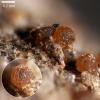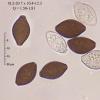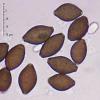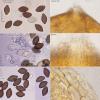
30-11-2025 12:53
 Edvin Johannesen
Edvin Johannesen
White short-stipitate apothecia found on thin twig

30-11-2025 10:47
 William Slosse
William Slosse
I recently found a collection of small Peziza sp.

27-11-2025 12:01
Thomas Læssøehttps://svampe.databasen.org/observations/10496727

27-11-2025 11:46
Thomas Læssøehttps://svampe.databasen.org/observations/10493918

17-09-2025 10:50
Heather MerryleesHi there!I am hoping for any advice on the identif

29-11-2025 08:40
 Andreas Millinger
Andreas Millinger
Hello,on a splintered part of a branch on the grou

28-11-2025 16:45
Nogueira HéctorNovember 23, 2025 Requejo de Sanabria (León) SPAI

25-11-2025 14:24
Thomas Læssøehttps://svampe.databasen.org/observations/10490522

27-11-2025 15:41
Thomas LæssøeSpores brownish, typically 4-celled; 26.8 x 2.4;

27-11-2025 11:31
Thomas LæssøeCollectors notes: Immersed ascomata, erumpent thro
These small (0.3-0.4 mm) orange perithecia grew on incubated rabitt dung for one month. They seem to be ostiolate because there is a crown of hyaline setae around the very inconspicuous, not protruding, neck. Perithecial walls are more o less glabrous. Asci clavate. Ascospores citriform, biporate with smooth walls.
According to GARCIA & al. (STUDIES IN MYCOLOGY 50: 63–68. 2004) the genus Sphaerodes currently comprise species characterized by non-ostiolate ascomata (if they are ostiolate they have a short neck surrounded by a crown of hyaline setae) and reticulate ascospores, umbonate at both ends. So only rest Melanospora as a good choice for my fungus. But I don't know a keyed species that matches with this collection.
Could you help me?
Thanks in advance

Good harvest! Your photos on the neck seems short and with this size can be spores can you look to M.fimbriata?
Michel.
Hi Michel
M. fimbriata is poorly described by Petch (Trans. Brit. Mycol. Soc.) with ELLIPSOID (sic) ascospores. And the somewhat platanoid, not really citriform ascospores drawn by Cannon & Hawksworth (pag. 126) together with the very small perithecia (40-50 microns in diam.) I think don't agree with my collection.
Thanks a lot



